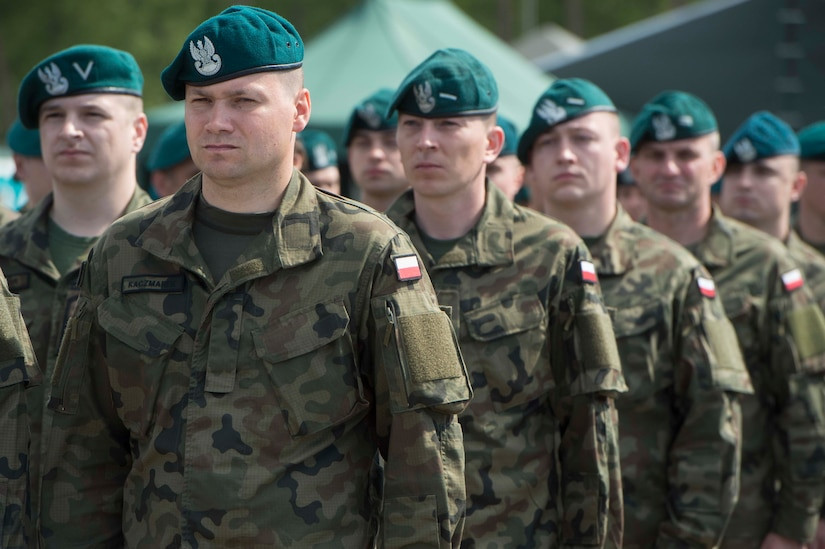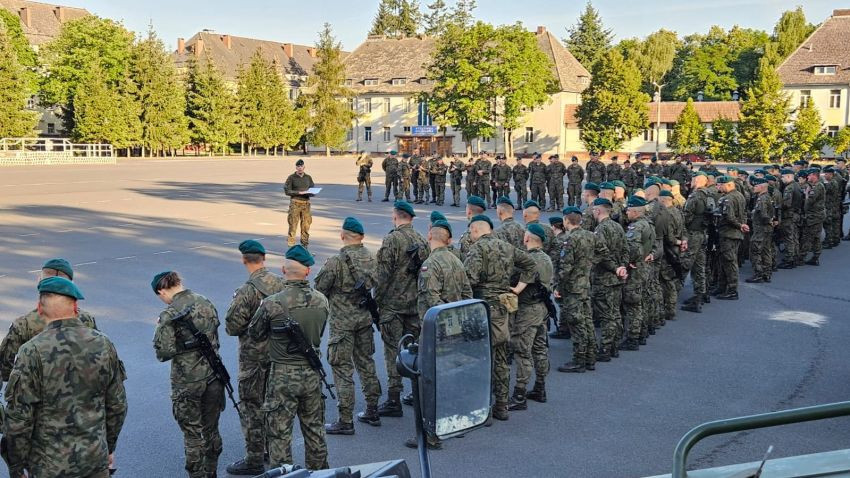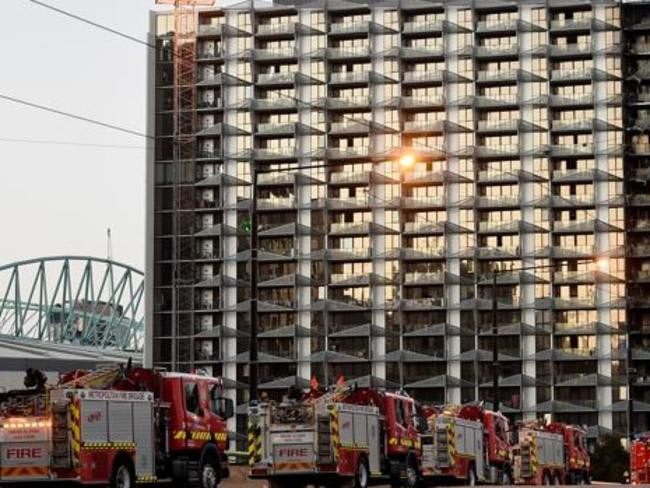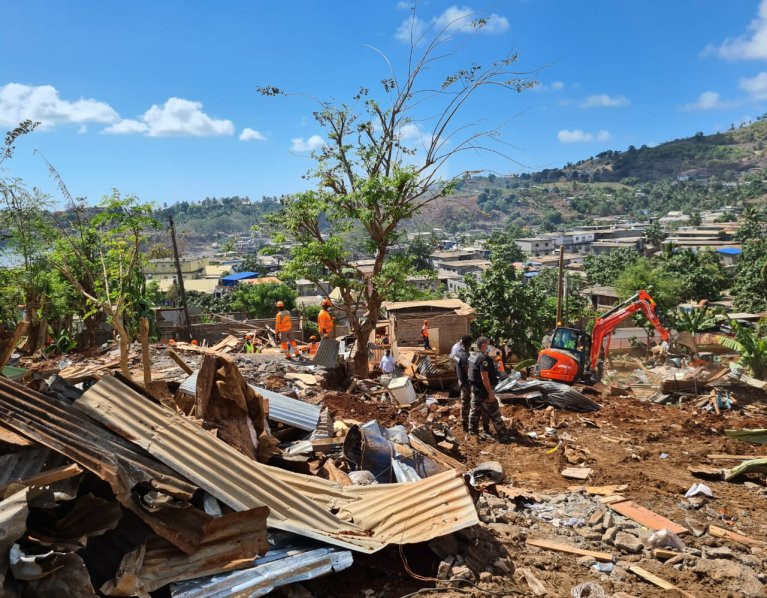More than 2,500 Polish troops, joined by dozens of U.S. and other allied soldiers, rode in military vehicles or tanks, or flew in fighter jets and helicopters in Warsaw, the Polish capital, on the Armed Forces Day holiday.
Some of Poland’s new weapons have replaced Soviet- and Russian-made equipment sent to neighboring Ukraine after Russia launched its full-scale invasion of its democratic neighbor on Feb. 24, 2022. Since Poland broke free of Moscow’s control starting in 1989 and then joined NATO, it has worked to modernize its army.
Poland’s Modern Military: A Strategic Shift
Those efforts moved into higher gear after Russia, under President Vladimir Putin, first invaded parts of Ukraine in 2014, and then began its full-fledged assault in 2022, with fears heightened all along the strategic stretch of NATO’s eastern flank — from the Baltic nations to Poland to Romania.
“Muscovites always threatened the peace here,” said Radoslaw Prokop, a 49-year-old who watched the parade. “For hundreds of years.”
U.S., British and Romanian soldiers riding in tanks with their national flags waving joined their Polish allies. They are here “at our invitation,” Duda said in his speech, recalling how “in the past there were those here whom we did not invite, who came here by force.”
Jacek Szelenbaum, a 60-year-old truck driver, was among the thousands of spectators. His grandfather was forced to serve in a mounted infantry division of the Russian czar in the early 20th century, the waning years of a long Russian occupation over Warsaw and the surrounding region of Poland.
He said that he realizes the parade is mostly for show, but is still encouraged when he sees the military having more modern weaponry as the years go by.
“We feel a bit better because we see this good equipment, and we feel the presence of our allies, Americans, British, Romanian and others,” Szelenbaum said. “It’s necessary in this situation, because Poland could never defend itself alone. Only in an alliance can we manage against Putin.”
A Historical Reminder: The Battle of Warsaw
The holiday falls on the anniversary of the 1920 Battle of Warsaw, in which Polish troops defeated Russian Bolshevik forces advancing on Europe, halting their western march.
The war in Ukraine has reminded Poland of the enduring threat the country has long faced on the flat plains of Central Europe, wedged between larger, more powerful — and often aggressive — neighbors.
Even membership in NATO hasn’t eased the sense of threat after Russia’s invasion of Ukraine and a migration crisis that erupted in 2021 along Poland’s border with Belarus. Warsaw saw a sudden surge that year in large-scale migration from the Middle East and Africa as a form of hybrid warfare organized by Moscow and Minsk.
Poland’s Defense Strategy: A Beacon for Europe
Polish Defense Minister Władysław Kosiniak-Kamysz wrote a letter to soldiers, saying that the holiday is a reminder of “the most glorious episodes of the Polish army, of the price of independence and freedom.”
“On this day, we pay tribute to all the heroes who fought for the homeland from the dawn of our country,” he added.
Russia’s war against neighboring Ukraine, and the Poland-Belarus border crisis, have led many Poles to fear what the Kremlin might do next, should it succeed in Ukraine.
Kosiniak-Kamysz said the Apaches, with their modern technology, mark a milestone for Poland’s efforts to modernize its military, and would allow Abrams tanks and F-35 aircraft to be used to their full capacities.
The U.S. Embassy said before the parade that “the sky will be filled with American F-35s and Apaches flying alongside our Polish allies!”
“America’s commitment to defending every inch of NATO is unwavering,” the embassy said in a post on X.
A Bold Move: Poland’s Leadership in Defense
Poland is increasing its troop numbers, modernizing its equipment, and enhancing its overall military readiness. Poland’s recent moves, including a $12 billion deal to acquire 96 Apache attack helicopters from the US, along with investments in Abrams tanks, Patriot missiles, and F-35 jets, demonstrate a serious commitment to fortifying its military capabilities.
Poland's defense strategy is not merely about increasing troop numbers, though it does plan to expand its military to 300,000 personnel by 2035. The country is also focused on modernizing its equipment and enhancing its overall military readiness. By securing advanced weaponry and establishing partnerships with countries like South Korea, Poland is positioning itself as a formidable military force within NATO.
A Call to Action: Europe’s Defense Strategy
This level of commitment to defense should serve as a beacon for the rest of Europe. France and the UK, despite their significant military capabilities, lag behind Poland’s commitment. If they were to allocate 4 percent of GDP to defense and match Poland’s example, it would not only enhance their ability to protect their own interests but also reduce their reliance on US support.
Other European nations, such as Germany, Italy, and Spain, also need to step up. Germany, with its strong economy, has rightly faced criticism for not meeting NATO's spending targets. By committing more resources to defense, Germany could address these criticisms and significantly bolster NATO’s collective strength.
This isn’t just about military budgets. It’s about ensuring Europe can defend itself in an increasingly unpredictable world. The war in Ukraine has shown the importance of being prepared for sudden threats. Europe can no longer afford to rely heavily on external support.
A New Era of Defense: Europe’s Shared Responsibility
As traditional alliances face new challenges and global threats continue to rise, Europe must be ready to defend itself. Poland’s actions set a new standard that others should follow. France, the UK, and the rest of Europe must recognize the critical importance of strong defense forces and act accordingly. Investing in defense is not optional – it is essential.


















